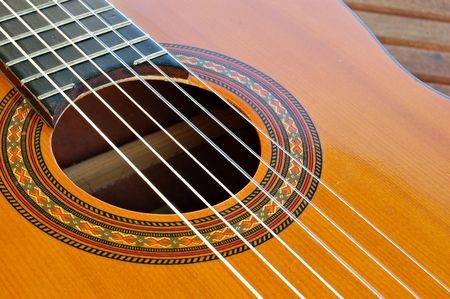
To the average person, a guitar is a guitar. They don’t pay much attention to details. However, for musicians who love their instruments, a guitar isn’t just a guitar, and how each one is made truly matters for both aesthetic and musical reasons.
A guitar soundboard is something music makers care about because it plays a vital role in the look and sound of the instrument. Should the soundboard be made of laminated plywood or quarter-sawn solid spruce?
Purists love Sitka spruce soundboards for their acoustic stringed instruments. Why? For starters, spruce grows outdoors through many seasons. Heavy winter growth rings in the wood help create a bright sound, while softer summer growth rings help create a mellow sound. Sound waves pass through the wood along the grain lines, and there’s a certain natural and wonderful tone that comes from the Sitka spruce’s various grain lines.
Like wine, Sitka spruce improves with age. Ask someone with a Sitka spruce soundboard on an older instrument, and they’ll tell you the sound has become better and richer the longer they’ve had it. Because the wood’s cell walls dry out over time becoming more rigid, an instrument player will notice their soundboard becomes even more responsive to string vibrations. Basically, this is called tonal improvement, and that’s why older instruments are so often beloved by their owners and worth quite a lot of money if and when they’re sold. Spruce plus age equals brilliant sound!
High quality Sitka spruce can be sawed, glued and tapered with a rounded shape to maintain a full body in the mid-section while reducing thickness along the sides. This gives the soundboard more flexibility than other materials offer, along with the added bonus of allowing it to vibrate freely in a way that’s most pleasing to the ear.
Laminated plywood isn’t as good as using Sitka spruce for soundboards because it’s cheap and doesn’t yield the high quality tone and overall sound serious musicians want. The grain lines and a film of glue between layers hampers sound waves rather than enhancing them. Laminated plywood also stays static over the years, never mellowing and “getting better sounding with age” like natural Sitka spruce does.
All of the soundboards found on AlaskaWoods.com are sustainably harvested from old-growth timber, we call them EarthTone Soundboards™. Learn more about what makes EarthTone Soundboards™ the finest in the world.
Copyright © 2023 Alaska Woods • 855-425-9663
Phone Support Closed